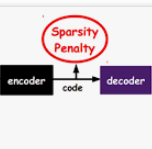项目名称: 面向卫星云图纹理分析的对偶树轮廓波及模糊SVM理论与算法研究
项目编号: No.61271399
项目类型: 面上项目
立项/批准年度: 2013
项目学科: 无线电电子学、电信技术
项目作者: 金炜
作者单位: 宁波大学
项目金额: 76万元
中文摘要: 针对卫星云图纹理分析中存在的困难,本项目采用现代信息技术与大气科学交叉互补的研究思路,构造对偶树轮廓波变换及变换域隐马尔可夫树(HMT)模型来表达云图的纹理与形状特征,并引入模糊支持向量机(SVM)理论,建立一套卫星云图纹理分析新方法。研究内容集中在四个方面:(1)构造一种具有抗混叠及平移不变性的对偶树轮廓波变换,实现云图的稀疏表示;(2)提出有效的云图预处理方法,并根据不同波段云图的光谱特性,设计聚类算法提取云图感兴趣区域;(3)研究变换域HMT模型和有效的模型参数估计算法,提取典型云区的纹理与形状特征;(4)构建适合云图纹理分析特殊性的模糊SVM,实现积雨云、卷云、中云、积状低云、层状低云或混合云系的自动分类及强对流云团的识别和跟踪。项目的研究将有助于解决云图的纹理分类、分割等实际问题,并指导不同天气系统的识别及演变趋势分析,从而为天气预报、气象灾害检测、气候分析等提供关键技术保障。
中文关键词: 卫星云图纹理分析;对偶树轮廓波变换;过完备字典;稀疏表示;自适应模糊支持向量机
英文摘要: Due to the difficulties of texture analysis for satellite cloud image, establishing a new approach is necessary. Guided by the cross-complementary properties of modern information technology and atmospheric sciences, this project will firstly construct the dual-tree Contourlet transform and transform domain Hidden Markov Tree (HMT) model to express the texture and shape features of the cloud image, and then introduce the theory of fuzzy Support Vector Machine (SVM) to establish the new texture analysis system for satellite cloud image. The detail of the project is focused on the following aspects: (1)Constructing an non-aliasing and shift-invariant dual-tree Contourlet transform to represent cloud image sparsely; (2)Proposing effective preprocessing method, then forming clustering algorithm to extract Region of Interest (ROI) of cloud images using the spectral characteristics of the different bands; (3)Investigating the HMT model of transform coefficients and proposing effective algorithm to estimate the model parameters to extract the texture and shape characteristics of the typical cloud area; (4)Establishing a fuzzy SVM which suited to the particularity of the satellite cloud image texture analysis to classify the typical cloud area into cumulonimbus, cirrus,mid-level clouds, low-level cumulous, low-level str
英文关键词: Satellite cloud image texture analysis;Dual-tree Contourlet transform;Over-complete dictionary;Sparse representation;Adaptive fuzzy support vector machine
